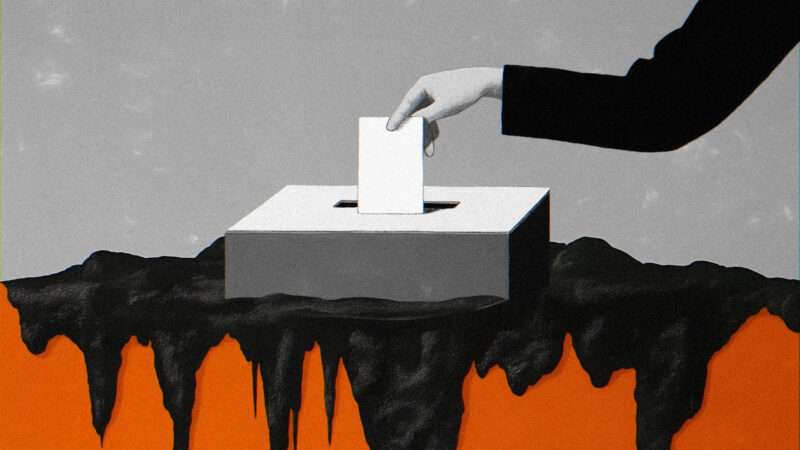
A voting method is the procedure at the heart of an election that specifies what information is to be gathered from voters, and how that collected information is to be utilized to determine the winning candidate. The U.S. Constitution is mute as to what voting method should be employed. The simplest, known as "plurality," has historically been the default, and still dominates as the voting method for U.S. public elections. Plurality allows each voter only to vote for a single candidate. The candidate receiving the largest number of votes is the winner.
At about the time of the American Revolution, two French scholars, Jean-Charles de Borda and Nicolas de Condorcet, pointed out some of plurality's serious problems. A 240-year-long debate ensued. Scores of voting methods have been proposed and argued as the best replacement for plurality. If any of the many arguments were truly sound, convincing, and clearly superior to all others, plurality would have been replaced long ago and the nation would already be living happily ever after. However, the only widespread agreement has been that plurality really does need to be replaced. It is even worse than Condorcet and Borda thought.
Plurality is killing us. It is a cause of the increasing polarization that is rending the fabric of our society. It has forced voters to elect presidents that the majority of the voters themselves oppose. People are sick of having to vote for the "lesser evil."
A new voting method, AADV (Approve/Approve/Disapprove Voting), was proposed in 2020. Each voter has the option to approve of either one or two of the candidates, and also has the option to disapprove of one candidate. Each candidate's approvals and disapprovals are separately summed. Disapprovals are then subtracted from approvals to obtain the net approvals for each candidate. The candidate with the most (positive) net approvals is declared the winner. If no candidate achieves positive net approvals, NOTA (None Of The Above) has won. If NOTA should win, all candidates are disqualified and a new election must be held with new candidates.
AADV promises to fix problems with voting methods to the greatest extent that they can be fixed, and thereby end the debate. Here is the logic that supports that claim.
The very first step for designing or selecting a good voting method (or anything for that matter) is to correctly and concisely define what a good voting method should do. It should be easy for everyone to agree that the primary and overriding purpose of any and every (public) election is to make the "best" choice of the candidates for the office being filled (with the caveat that decision-making power be kept "reasonably dispersed"). A fairly large number of voters will make these decisions; there is no choice but to lightheartedly assume that collectively they do possess the knowledge and wisdom to make good ones.
When about to mark a ballot for a particular race, each voter has an "opinion" in their brain about each of the candidates in that race. Sometimes that opinion will be strongly positive for a candidate they consider to be "very good"—the voter would be very happy and satisfied if that candidate wins. Sometimes the opinion will be strongly negative and the voter would be very dissatisfied if that candidate should win. Of course, a voter's satisfaction regarding a candidate might be anywhere between strongly positive and strongly negative, including zero (no opinion). It also happens quite often that a voter's opinion of a candidate is zero because they are not informed and simply do not know enough about that candidate to have any opinion—most elections with three or more candidates have lots of this type of no opinion.
There are many voters, each with their own set of opinions about each of the candidates in the race. It is possible (virtually certain with large numbers of voters) that, for any particular candidate, some voters will have positive opinions and some will have negative ones; some of them may be no opinions. How should a voting method process this data to identify the correct winner?
The only reasonable conclusion to be reached is that the best candidate, the one which best represents the voters' collective opinion, is the one which has the highest (or most positive) net total of all opinions (that is, positive opinions minus negative ones). Any number of "no opinions" must not affect the decision in any way. Thus: The best possible choice is that result (chosen candidate) which maximizes voter satisfaction, net of dissatisfaction, when summed over all voters who voted. There is no better way to translate the collective knowledge, judgment, and wisdom of the voters into the best choice. This is the overriding and only objective that a voting method must have.
Much smoke has been generated arguing about the "fairness" of various voting methods. That is not a crucial issue. Neither of the above two definitions says anything about "fairness," so such debates have served only to misdirect attention. However, if anyone is worried about fairness, it would be hard to think of any fairer outcome than always choosing the candidate in every election that maximizes voters' satisfaction, just exactly as the definition specifies.
To understand the ramifications, think about the simplest possible election: a one-candidate election. There actually are one-candidate public elections in many states. They are called "judge retention elections." In every respect, these are one-candidate elections—voters vote to elect (or not elect) a single candidate to serve a term of some number of years in a certain capacity.
How does plurality work for one-candidate elections? Not very well at all! Since plurality allows each voter to vote only for one candidate, the candidate will always be elected. That is why judge retention elections allow voters to vote either "Yes" or "No" (satisfied or dissatisfied). The "No" votes are subtracted from the "Yes" votes and the sum has to be positive (more "Yes" votes than "No" votes) in order to reelect the candidate. It's called a "referendum."
However, there certainly are plenty of races in regular elections where only one candidate is on the ballot and for which the plurality voting method is employed. These are sham elections since voters have no ability to reject that candidate or otherwise affect the result. Note that instant-runoff voting (indeed, all the ranked-choice methods), approval voting, STAR voting, Condorcet (and substantially all other advocated methods) have this same problem: They do not allow any voter to ever express dissatisfaction with any candidate.
Now, think about two-candidate elections in which one of the two candidates is to be elected. It must be determined how satisfied (or dissatisfied) voters would be if candidate A were to be elected, and also how satisfied (or dissatisfied) they would be if candidate B were to be elected. The candidate with whom voters would be most satisfied will then be designated the winner. But it certainly is possible that the voters may be dissatisfied with both candidates. Just as in one-candidate elections, it is critical that voters have the ability to reject either or even both candidates. And just as with one-candidate elections, the opinions of voters dissatisfied with candidate(s) clearly should not and must not be ignored.
Obviously, these conclusions for one and two-candidate elections also are true with any number of candidates. If a voting method is to select winners with which voters are most satisfied, voters' dissatisfactions cannot be ignored and must offset the satisfactions of other voters for each particular candidate.
AADV allows a limited number of both approvals and disapprovals. It works very well for any number of candidates, including just one. However, no real-world voting method can be perfect, and AADV certainly is no exception.
It has been proven (Gibbard-Satterthwaite theorem, as extended) that every voting method (other than a dictatorship) can be manipulated to some extent by strategic voting. No voting method can be completely immune to such degradation, but some are much more susceptible to it than others. It is a tradeoff that must be considered when designing or selecting a voting method.
AADV optimizes this tradeoff by collecting the two most important data items—the candidate each voter thinks is best and the candidate each voter thinks is worst—and very little more. A second approval is allowed in order to defuse any motivation to vote for a "lesser evil" instead of each voter's sincere first choice. Allowing additional voter inputs would be expected to degrade performance; additional data cannot help decision making significantly, so it could only be harmful noise and/or attempts to manipulate results through insincere "strategic" voter inputs.
It is known that all voting methods will sometimes make mistakes (i.e., not identify the candidate that maximizes voter satisfaction). A method that makes the fewest and smallest errors, and doesn't ever commit major blunders (like electing a candidate that the majority of voters oppose) obviously is preferred. By the logic, AADV is close to the best that can be done, but how good is it? The accompanying chart summarizes the RMS (Root of the Mean Square—similar to average) error for various voting methods in 600,000 simulated elections of all possible kinds; 10,000 voters sincerely voted in each election.

AADV provides such a large improvement that it can qualitatively improve elections. No longer will parties nominate highly divisive candidates as they will garner lots of disapprovals and not fare well. Winners will be candidates with broad appeal and few negatives; much healthier. Thus, AADV will tend to reduce polarization instead of exacerbating it as plurality does. Electing candidates the majority of voters dislike will be a thing of the past. The "playing field" should become more level, resulting in all candidates being able to receive reasonable media coverage and serious voter consideration. That AADV continues to work extremely well when there are lots of candidates eliminates or greatly reduces the need for runoff elections, and should be expected to elect more widely acceptable candidates in primary elections.
The post The End of the Voting Methods Debate appeared first on Reason.com.







